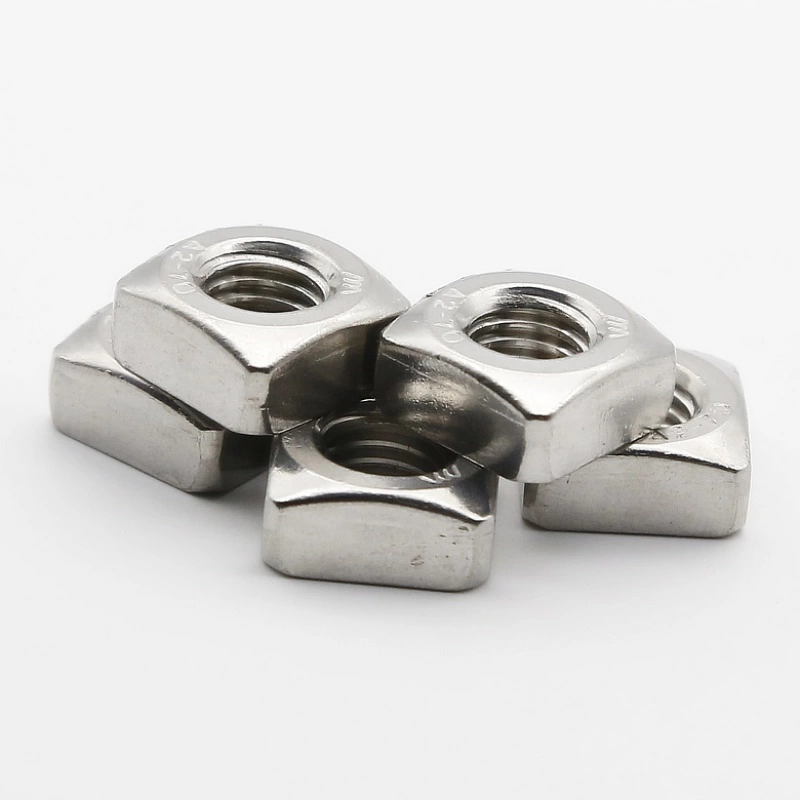

hexagonal plain nut
Dec . 16, 2024 08:28 Back to list
hexagonal plain nut
Understanding Hexagonal Plain Nuts A Comprehensive Overview
Hexagonal plain nuts, essential components in the world of fasteners, play a vital role in the assembly of mechanical applications. Their design, purpose, and functionality go far beyond mere aesthetics, making them a fundamental element in a wide array of industries, from automotive to construction. This article delves into the intricacies of hexagonal plain nuts, highlighting their significance, applications, and the factors to consider when selecting them for various projects.
Design and Structure
Hexagonal plain nuts are characterized by their six-sided shape, which enables them to be easily tightened or loosened using standard tools, such as wrenches. Typically manufactured from materials like steel, stainless steel, or brass, these nuts boast remarkable strength and durability, essential for withstanding mechanical stress. Their internal threading allows them to be screwed onto a bolt or a screw, creating a secure connection between two or more components.
The geometry of hexagonal plain nuts not only provides ease of grip but also distributes load evenly across the nut's surface when torqued. This design is essential because it helps prevent stripping or damaging the threaded fastener, ensuring longevity and reliability in mechanical assemblies.
Applications Across Industries
Hexagonal plain nuts are indispensable across numerous sectors. In the automotive industry, they secure critical components such as engines, transmissions, and chassis. Their ability to withstand vibration and dynamic loads makes them a preferred choice in high-performance applications.
In the construction field, these nuts are vital for holding structural components together, such as steel beams and trusses. They ensure the stability and safety of buildings and bridges. Additionally, hexagonal plain nuts are commonly used in machinery, furniture assembly, and equipment manufacturing, demonstrating their versatility and importance in everyday applications.
hexagonal plain nut

Selection Criteria
When selecting hexagonal plain nuts for a specific application, several factors should be considered
1. Material The choice of material affects the nut's strength, corrosion resistance, and overall performance. For outdoor applications or environments prone to moisture, stainless steel is often preferred due to its superior resistance to rust.
2. Size and Thread Type Hexagonal plain nuts come in various sizes and thread types, including coarse and fine pitch. It's crucial to match the nut with the appropriate bolt or screw size and type to ensure a secure fit.
3. Load Rating Understanding the load rating is critical when selecting a nut for a specific application. It is essential to choose a nut capable of handling the operational loads without failure.
4. Standards and Certifications Many industries require specific standards to be met for fasteners. Ensuring that the hexagonal plain nuts adhere to these specifications guarantees compliance with safety regulations and enhances overall quality.
Conclusion
Hexagonal plain nuts are more than just fasteners; they are essential components that ensure the integrity and safety of various mechanical assemblies. Their robust design, versatility, and critical function across multiple industries make them indispensable in modern engineering and construction. When selecting hexagonal plain nuts, it is vital to consider factors such as material, size, load capacity, and compliance with industry standards. By doing so, one can ensure the effectiveness and reliability of the assembly, ultimately contributing to the success of the project at hand. Understanding these fundamental elements allows engineers and designers to make informed decisions, promoting safety and performance in every application.
Latest news
-
High-Strength Hot Dip Galvanized Bolts - Hebei Longze | Corrosion Resistance, Customization
NewsJul.30,2025
-
Hot Dip Galvanized Bolts-Hebei Longze|Corrosion Resistance&High Strength
NewsJul.30,2025
-
High-Strength Hot-Dip Galvanized Bolts-Hebei Longze|Corrosion Resistance&High Strength
NewsJul.30,2025
-
Hot Dip Galvanized Bolts-Hebei Longze|Corrosion Resistance&High Strength
NewsJul.30,2025
-
Hot Dip Galvanized Bolts - Hebei Longze | Corrosion Resistance, High Strength
NewsJul.30,2025
-
High-Strength Hot Dip Galvanized Bolts-Hebei Longze|Corrosion Resistance, Grade 8.8
NewsJul.30,2025

